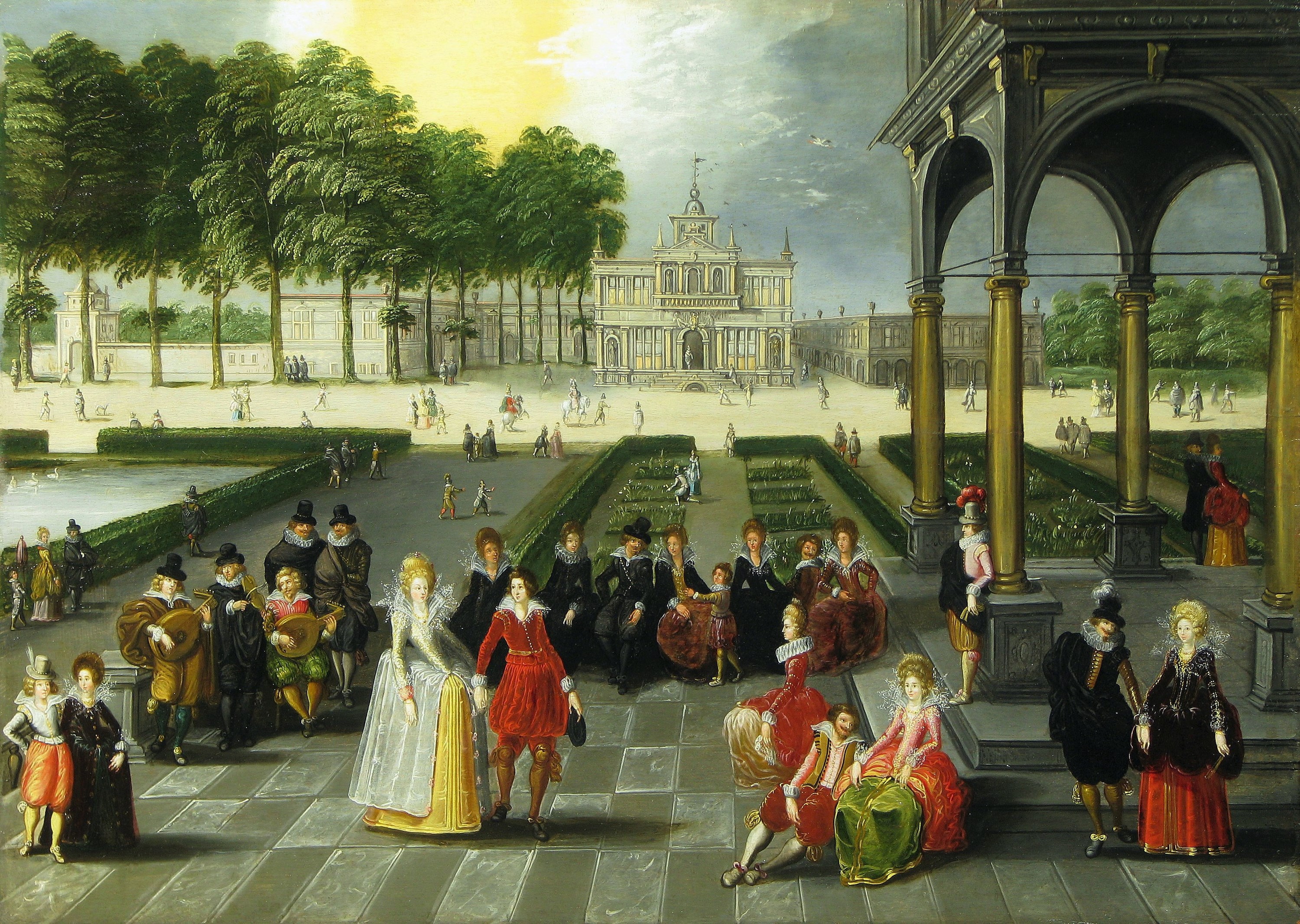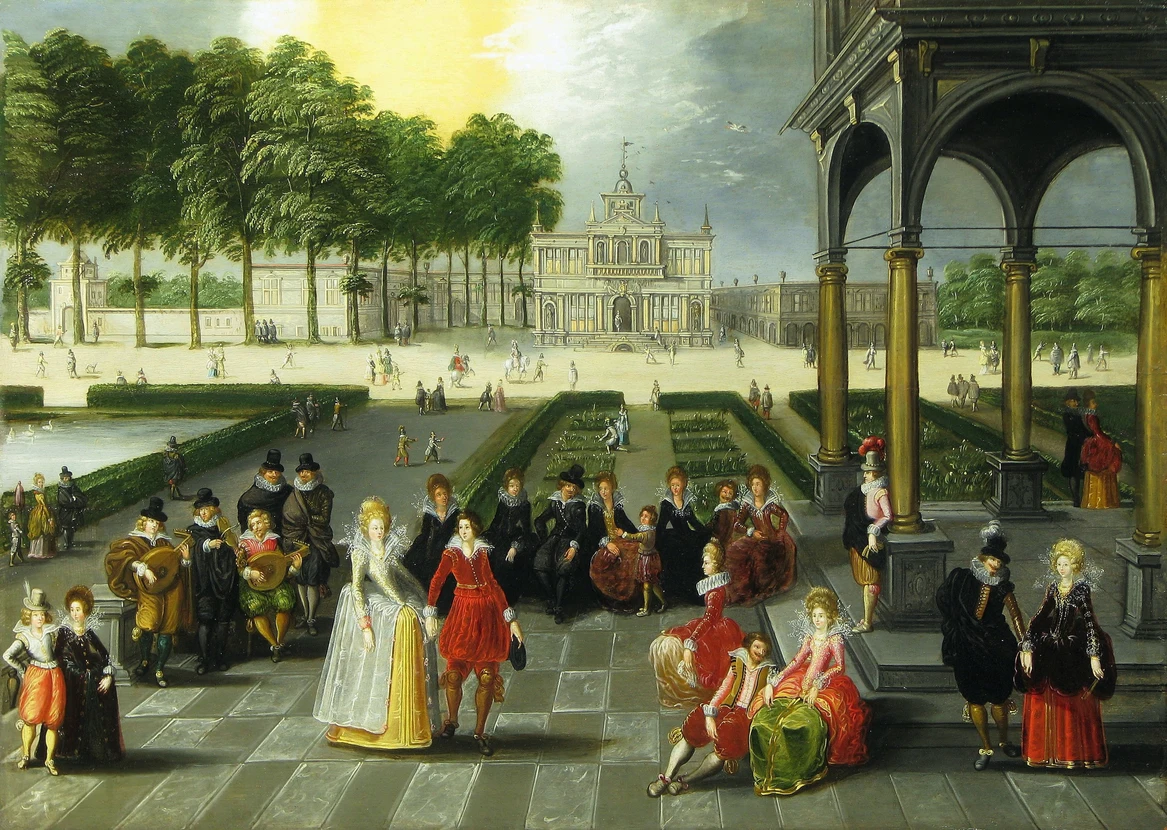A painter of allegorical, mythological and religious subjects, genre scenes and architecture, Louis de Caullery undoubtedly came from the village of Caullery near Cambrai. He was probably the son of Loys de Caullery, a French miniaturist who died in 1598 and produced a "Sainte Famille" dated 1594.
Louis appears in the registers of the Antwerp Guild of Saint Luke in 1594 as a pupil of Joos de Momper le Jeune (1564-1635). And in 1603, when he became master.
Louis de Caullery seems to have been active in Flanders throughout his life, although he had a wide knowledge of different European cultures. It is difficult to attest with certainty to his trip to Italy. However, it seems that he was greatly influenced by the great cities of the peninsula, such as Venice, Florence and Rome, which he often depicted in his compositions. Louis de Caullery attached particular importance to the treatment of classical architecture and palaces, sometimes existing, as in the case of the Castel Sant'Angelo or Piazza San Marco, but often imaginary.
In the first two decades of the 17th century, Louis de Caullery developed a very distinctive style. He generally concentrated on depicting high society through gallant scenes, banquets and activities in parks in front of palaces, where people danced, listened to music, ate and strolled. The clothing is rich, giving us a glimpse of the fashions of the time.
Louis de Caullery was part of the tradition of gallantry introduced in Flanders by Hieronymus Francken I (1540-1610), who was part of the Ecole de Fontainebleau. He lived in France, in Fontainebleau and then in Paris, from 1560 until his death in 1610, returning to Antwerp from 1574 to 1578. Hieronymous Francken I illustrates the galant style and festivities that were very much in vogue at the court of Henry III and then Henry IV. He was renowned for his ball scenes, a subject that would be propagated in the early 17th century in Antwerp by his nephews, Hieronymus Francken II (1578-1623) and Frans Francken II (1581-1642) and their contemporary Louis de Caullery.
In sixteenth-century France, court balls were a very important political instrument, used by sovereigns to subdue and dominate the nobility, who were still very turbulent at the time. Gallantry was seen as a civilising force capable of controlling social conflicts and cultivating society. In France, the fête galante remained a major trend in painting until the 18th century, with Watteau (1684-1721) and Fragonard (1732-1806).
Frans Francken II and Paul Vredeman de Vries (1567-1636) depicted a famous ball at the court of the Archdukes Albert and Isabella (preserved in the Mauritshuis in The Hague) around 1610.
In our painting, Louis de Caullery, no doubt inspired by the works of Hans Vredeman de Vries (1526-1607), introduces an extra dimension by setting the party outside, in the grounds of an ideal palace. He thus opened up the ballroom, which had been confined to the interior. After civilising the interior of palaces, gallantry set out to conquer the world. Here, everything is luxury, calm and pleasure.
Our painting, with its rigorous construction and perfectly centred perspective, highlights a vast garden in front of a majestic palace. This panel is a fine example of the works in which Caullery likes to depict small, elegant, richly dressed figures. This depiction of a festive, worldly and elegant scene is one of Louis de Caullery's finest and most delicate works.
MUSEUMS: Rijksmuseum, Amsterdam; Louvre, Paris; Prado, Madrid; Musée des Beaux-Arts, Angers, Bordeaux, Quimper, Troyes; Musée Mun, Cambrai; S.M.K., Copenhagen; Kunsth, Hamburg; Musée Curtius, Liège; Musée Boymans van Beuningen, Rotterdam; ...

